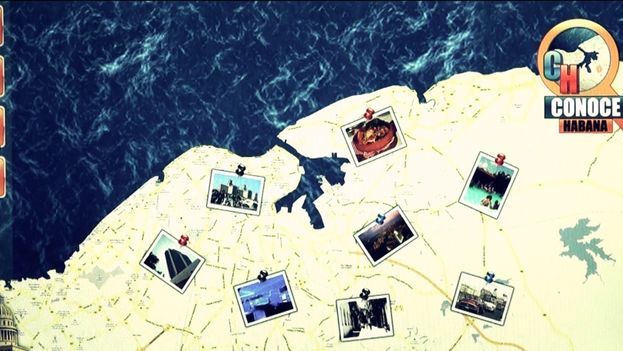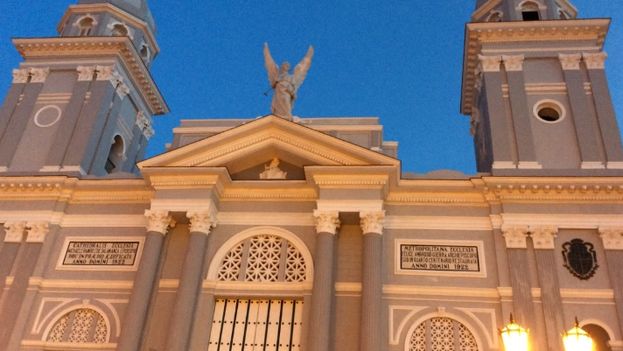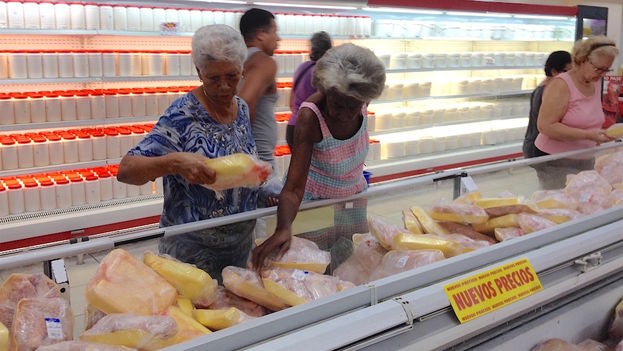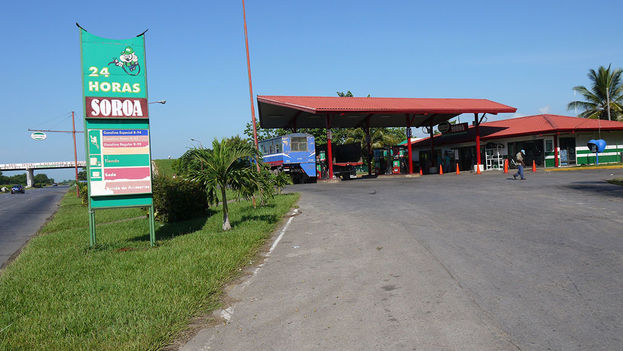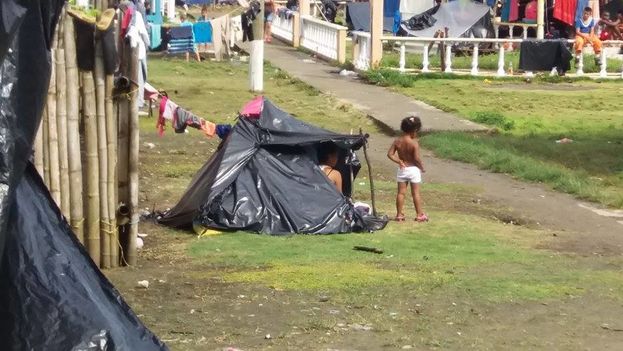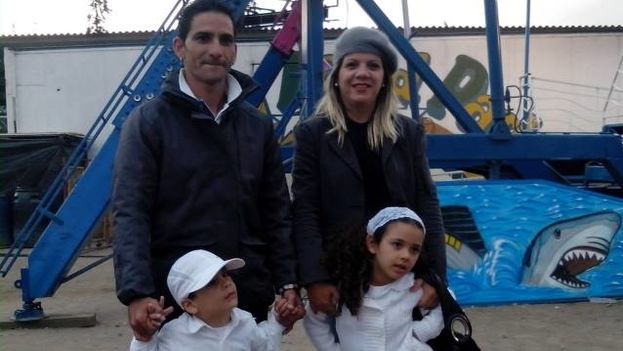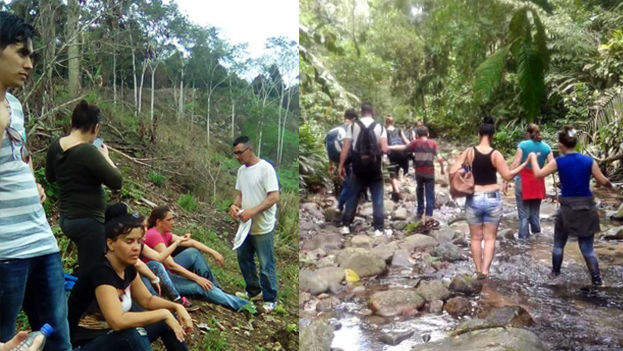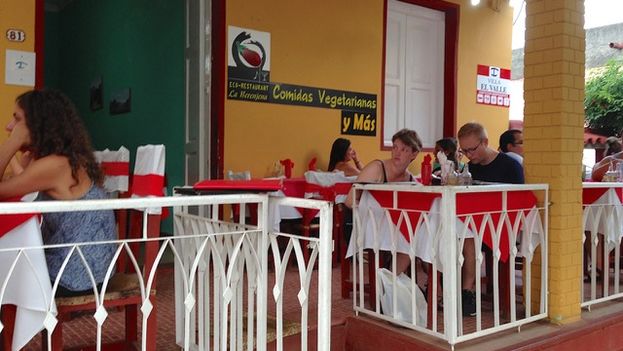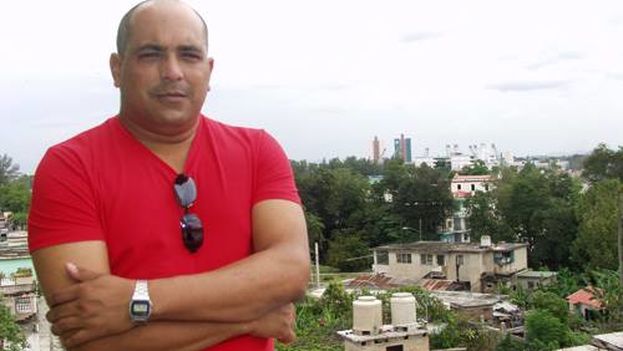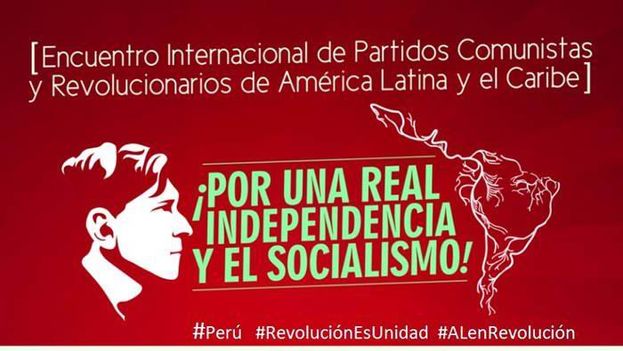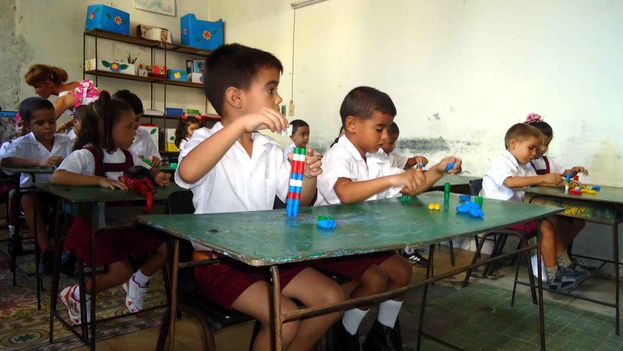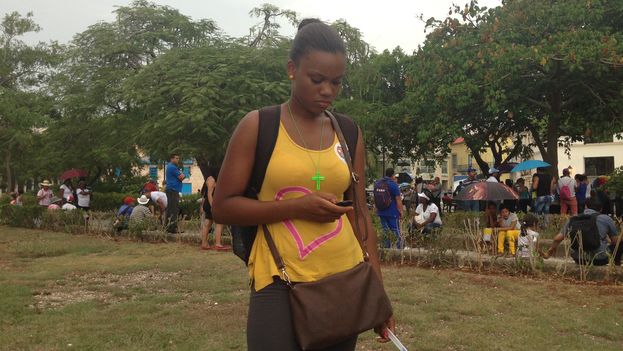
![]() 14ymedio, Yoani Sanchez/Reinaldo Escobar, Havana, 3 September 2016 — If you are considering sending a text message to a friend to wish him a “happy coexistence” with his family or to suggest that he not give in to “the dictatorship of work,” it is very likely that the phrase will never reach its destination. A filter implemented by the Telecommunications Company of Cuba S.A. (ETECSA) blocks certain words from flowing through the cellular network. (See below for the list.)
14ymedio, Yoani Sanchez/Reinaldo Escobar, Havana, 3 September 2016 — If you are considering sending a text message to a friend to wish him a “happy coexistence” with his family or to suggest that he not give in to “the dictatorship of work,” it is very likely that the phrase will never reach its destination. A filter implemented by the Telecommunications Company of Cuba S.A. (ETECSA) blocks certain words from flowing through the cellular network. (See below for the list.)
For years, users of the only cellphone company in the country have suffered from congestion on the lines and areas of poor coverage, but few have noticed that there is also a strict blockade on the use of key terms and phrases in mobile messaging.
The discovery of this list has happened almost by chance. Several users, upset that their messages were charged for but not delivered, exchanged experiences. This week they connected the dots and found that texts containing the following references never reached their destinations: “human rights,” “hunger strike,” “José Daniel Ferrer,” or the name of the independent magazine “Coexistence.” continue reading
Texts with references to “human rights,” “hunger strike,” “José Daniel Ferrer,” or the name of the independent magazine “Coexistence” never arrive
Over several days and at different points in the national geography, this newspaper has run tests from terminals with very different owners, ranging from opponents and activists to people without any links to independent movements. In all cases, messages containing certain expressions “were lost on the way.”
Cubacel is ETECSA’s cellular network and the contract that each user signs to get a mobile line makes clear that the among causes for which the service will be terminated are uses “prejudicial to morality, public order, state security or that serve as support in carrying out criminal activities.”
The customer is never warned that their messages will be subjected to a content filter or that a part of their correspondence will be blocked if it alludes to opponents, concepts that are uncomfortable for officialdom such as “human rights” or to blogs critical of the government in the style of “Generation Y.”
Arnulfo Marrero, deputy chief of the ETECSA branch at 19 and B in Vedado, Havana, was surprised on Friday morning by a complaint presented to his office about the censorship. “We have nothing to do with this, you should contact the Ministry of Communications (MICOM),” the official explained to the bearer of the complaint.
“MICOM governs communications policy, because we don’t make any decisions here. All I can do is report it,” said Marrero.
Censorship, however, is not yet activated on messages that are sent to foreign countries, perhaps because of their high cost: 1 Cuban convertible peso (about $1 US) per 160 characters. Blocking them would provoke more complaints from disgruntled customers and would have set off alarm bells much earlier. However, in text messages received from abroad the same censorship applied to domestic text messaging is also applied.
In the Cuban case it is not morality that guides the scissors of censorship. Cubans can narrate an entire orgy in 160 characters, but cannot send the word “democracy”
In late 2001, Pakistan implemented a similar filter on cellphone text messages. The telecommunications authorities of that Asian country created a list of more than 1,600 prohibited terms in English and Urdu, which included obscene and insulting words, as well as words such as “condom” and “homosexual.”
In the Cuban case it is not morality that guides the scissors of censorship, because all the words in the popular argot alluding to sexuality can be sent freely. Cubans can narrate an entire orgy in 160 characters, but cannot send the word “democracia” to their recipients, not even when they try the trick of changing the “i” to a “1” and try to sneak in “democrac1a.”
The difference with Pakistan lies not only in the reason for blocking certain phrases or words, but also in the secrecy with which this censorship has operated for months, perhaps years, in Cuba. Few have noticed the relationship between certain expressions and communication problems, because they attribute it to the chronic problems of congestion and Cubacel’s bad service.
With more than three million cell phone users, the Cuban authorities have bet on few people associating errors in receiving messages with a desire to prevent the transmission of concepts and words.
The meticulous choice of what terms to block has not been random. Despite the high prices for mobile phone service, where one domestic call can cost as much as half a day’s wages, the presence of cellphones in the hands of Cubans has changed ways of interacting and people find parallel paths to avoid the excessive controls the government impose on all areas of activity.
“I didn’t know this was happening, although now that I read the list of censored words I’m sure I’ve used one of them at least once,” says Leo, 21, who was waiting outside the Cubacell office on Obispo Street in Havana this Thursday.
“I watch the news with breakfast,” said an astonished young man next to him, who said he had not noticed blocked terms, “although ETECSA works so badly that nothing should surprise us any more.” During special days, Christmas or Mother’s Day, communicating becomes a real ordeal.
At the University of Computer Sciences, as part of Operation Truth, a group monitored the internet and created matrices of opinions favorable to the Government
During his students years at the University of Information Sciences (UCI), the engineer Eliecer Avila worked on the so-called Operation Truth. His group monitored the internet and created matrices of opinion favorable to the government in forums, blogs and digital diaries. At present, Avila leads the independent Somos+ (We Are More) Movement, which is also on the long list of terms blocked by Cubacel messaging.
“We implemented algorithm projects that, given certain phrases or words entered by a user into their browser, they would appear preferentially in official pages,” Avila recalled for this newspaper. “We tried to invisibilize alternative proposals or criticisms.”
The presence of an intelligent filter is obvious in this case. If you type in the text “cacerolazo” – a word meaning the banging and pots and pans as a form of protest – your message will take much longer to arrive than some other text. A similar slowdown occurs if you write the names of Fidel Castro or Raúl Castro, and it is true in the latter case with or without the accented letter U.
How many dissident meetings have been frustrated because the invitation message never reached the invitees’ inboxes? How many misunderstandings between couples, domestic squabbles, and uncompleted professional tasks result from the filtering of messages that include last names such as Biscet and terms such as plebiscite?
Telecommunications censorship is not a new tool for the Plaza of the Revolution. Activist frequently denounce the blocking of their cellphones on December 10th, Human Rights Day, or other times when they want to gather together.
During the visit of Pope Benedict XVI to the island in September of 2012, more than 100 opponents reported the suspension of their cellphone service, along with house arrests and arbitrary detentions.
A blockade of uncomfortable digital sites has also been a common practice for officialdom. On the list of inaccessible sites are portals set up from abroad such as Cubaencuentro, as well as local newspapers like 14ymedio. More than a few users manage to circumvent the censorship by sending news via email or sending offline copies of pages that pass from hand to hand thanks to technological devices like USB flash drives and external hard drives.
China has transferred to Cuba its experience with the so-called Golden Shield Project, known as the Great Firewall, which employs more than 30,000 censors
In March of this year, Amnesty International noted that “only 25% of the Cuban population uses the internet and only 5% of households have a connection.” This situation has strengthened the use of mobile phones, especially texting, as a way of using “the internet without internet.”
Only since 2008 were Cubans legally allowed to have a cellphone contract and Cubacel currently has over three million users. Last year 800,000 new lines were established throughout the island, despite the high cost of a national call, the equivalent of half the salary of a working day.
In July 2014, the governments of Cuba and China signed an agreement on “cooperation in cyberspace.” China has transferred to the island its experience in monitoring and blocking content on the web, especially what they have learned from their launch in 1998 of the so-called Golden Shield Project, known worldwide as the Great Firewall, which employs more than 30,000 censors.
Raul Castro’s government has not only copied China’s content filtering strategy, but also the creation of its own social networks to discourage Cubans from using Facebook, Twitter or Google Plus. To achieve this an ersatz Wikipedia, called Ecured, was created, along with a platform-style Facebook dubbed La Tendera (The Shopkeeper) and an unpopular substitute for Twitter known as El Pitazo (The Whistle), all with little success.
We now know that the Cuban Government wants to go beyond such crude imitations and aspires to follow in the footsteps of its Great Chinese Brother, which has a long history of censoring text messaging through a “keyword list.” A user can have their entire messaging function disabled if their content does not pass the filter of the censors. In the city of Shanghai alone, the Hong Kong newspaper Apple Daily reports, messaging has been blocked for some 70,000 users.
List of Words and Phrases Known to be Blocked by Cubacel
14 y medio
14ymedio
Antunez
Antúnez
Berta Soler
Biscet
Carlos Amel
Coco Farinas
Coco Fariñas
Convivencia
Cuba Posible
Cubanet
Damas de Blanco
Democracia
Democrac1a
DDHH
Derechos humanos
Dictadura
Disidente
Elecciones libres
Generacion Y
Generación Y
Guillermo Farinas
Guillermo Fariñas
Hablemos Press
Huelga de hambre
Jose Daniel Ferrer
José Daniel Ferrer
Oscar Elias Biscet
Óscar Elías Biscet
Plebiscito
Policía Política
Policia Politica
Primavera Negra
Represión
Represion
Seguridad del Estado
Somos+
Todos Marchamos
Unpacu
Yoani Sanchez
Yoani Sánchez

